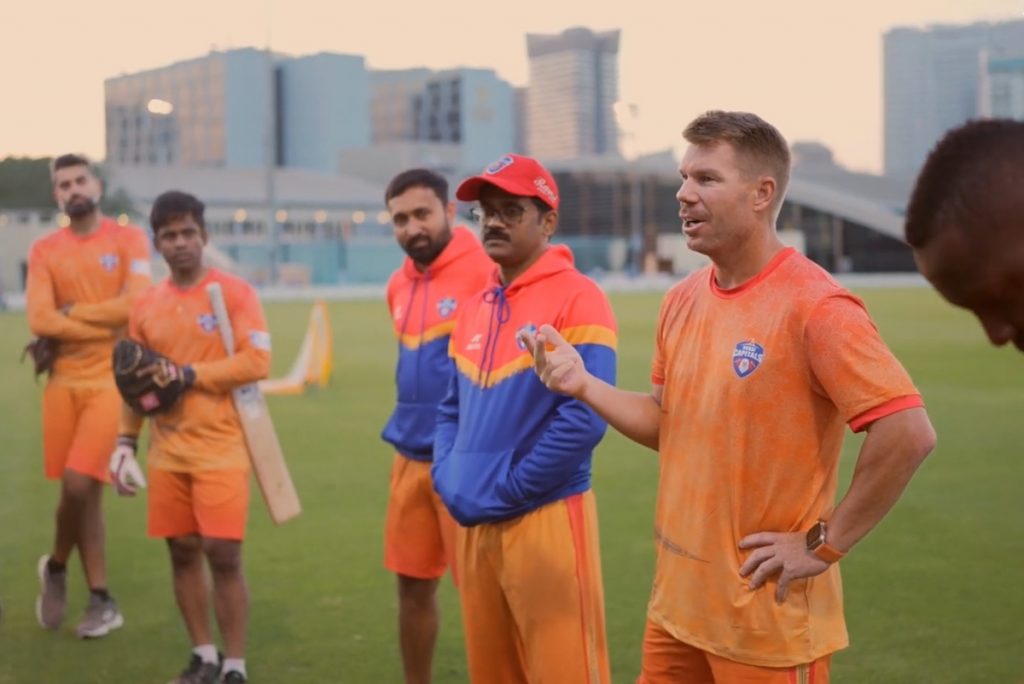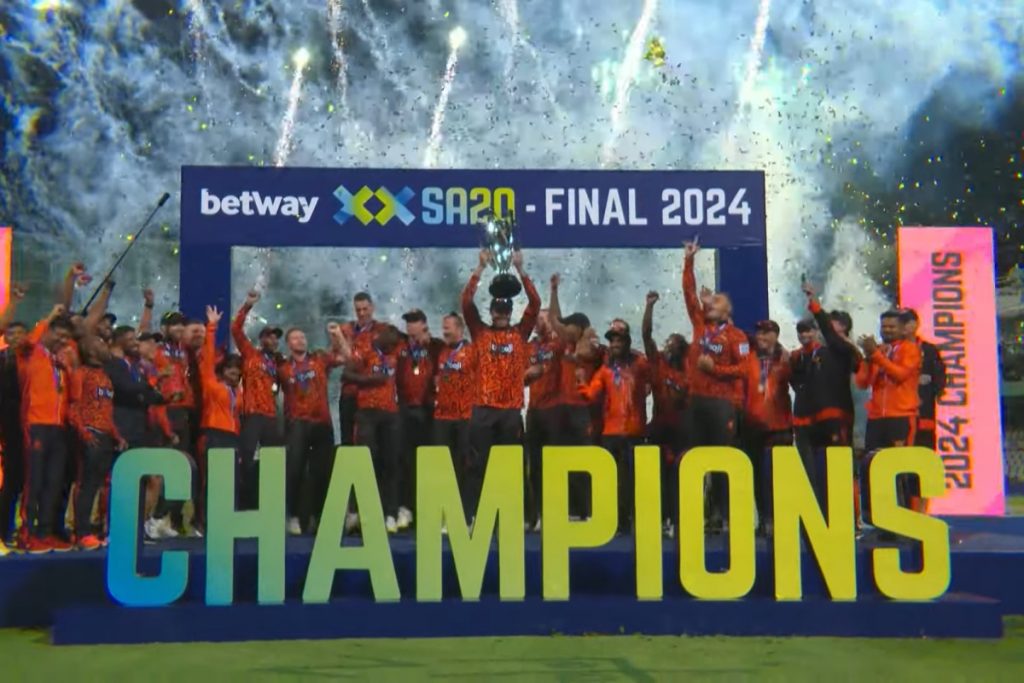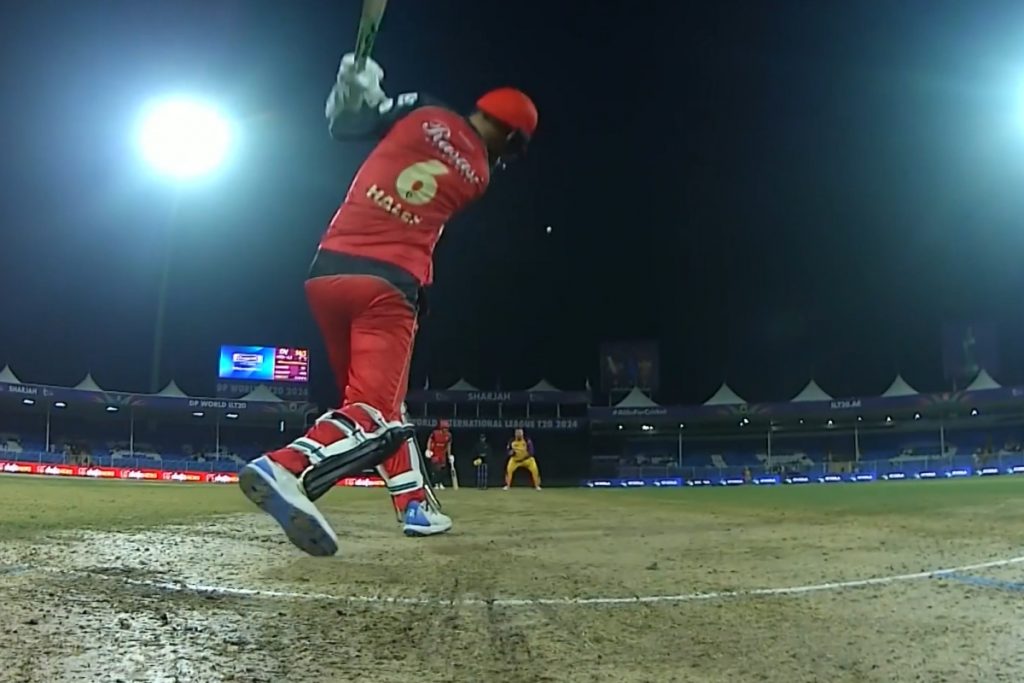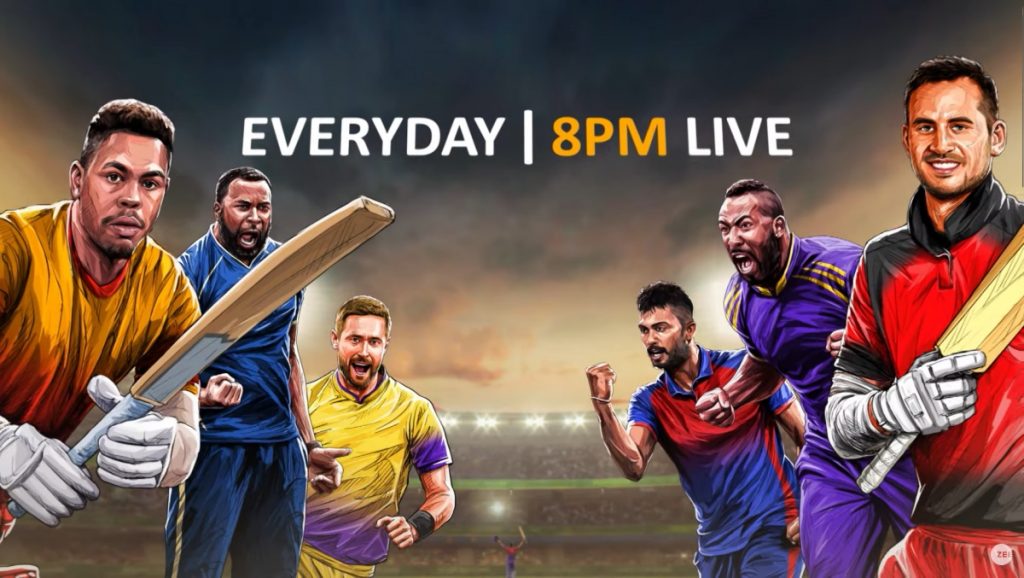The birth of a whole new wave of T20 franchise competitions will bring about the death of international cricket according to a great many articles we’ve read in the last six months. We don’t really know about that. We’re pretty certain that they’ll bring about the death of several T20 franchise leagues though.
When we published the original version of this article in August 2022, the two big new arrivals were the UAE’s International League T20 (ILT20) and South Africa’s SA20. All six franchises in the latter were bought by IPL franchise owners, while five of the six UAE franchises are owned by Indian firms, including IPL owners.
We’ve since seen the birth of Major League Cricket (MLC) in the United States. The finer business points are too boring to go into, but as far as we can make out, four MLC teams are tied to IPL entities.
T20 franchise cricket is taking over, everyone has quite reasonably concluded – because that’s where the money is.
But will these leagues *make* money?

Another way of looking at things is that there’s currently a bit of a land grab going on and T20 franchise cricket, as a whole, is overreaching.
Throughout much of January, the following leagues were taking place concurrently:
- The ILT20 in the UAE
- The SA20
- The Big Bash
- The Bangladesh Premier League (BPL)
All of these teams are drawing on much the same pool of cricketers which means we’re increasingly seeing players ditching one league halfway through to go and play in another. Quite apart from the ramifications for sporting integrity raised by Cricinfo’s Matt Roller this week, this is just… shit.
Isn’t it?
We don’t know about you, but when even the players themselves can’t be arsed sticking with a tournament right the way through to its climax, we find it hard to see that competition as a particularly big deal.

That is then compounded by the identities of the players who do last the distance. No-one’s quite jetting back and forth between the various leagues representing multiple franchises simultaneously, so when your superstar buggers off for continents new, a replacement has to step in. With four leagues going on at the same time, that’s an awful lot of playing staff to find.
Financial clout and IPL link-ups carry a bit of weight for some teams, but talent is unavoidably spread far, wide and thinly.
For example, the first batch of 21 ‘marquee’ signings trumpeted by the ILT20 included the likes of Akeal Hosein, Rovman Powell and Bhanuka Rajapaksa. No disrespect to these players, but their presence in such a list was indicative of how quickly things tail off.
And this is the thing, isn’t it? This is still T20, these are still franchises, but everything’s just fundamentally less than the IPL.
We’ve no idea what the projected market or TV deals are for any of these new leagues, but viewed as competitions by fans, they’re defined by what they’re not. They’re paler imitations.
Take a look at the stands during an ILT20 match and it’s clear investors aren’t recouping their investment through ticket sales.
You get a pretty good view of this from the middle. Behold the dimly-lit plastic seating!

Oh but it’s not about attendance, is it? It’s about “the lucrative Indian TV market”.
But is that really so easy to capture?
The Indian market is vast, but these are not Indian competitions and so they’re surely just out-and-out less interesting to the average Indian viewer. That must make it harder for the franchises to get a direct return on their investment.
Official broadcaster Zee claimed over 100 million people tuned in for the inaugural season, which immediately makes us wonder what qualifies as a ‘viewing’.

That still of Alex Hales a little further up the page was taken from Zee’s ILT20 YouTube channel. While this boasts a quarter of a million subscribers, the various highlights videos are mostly getting a jaw-droppingly small number of views – literally hundreds in many cases. The “Sensational 6s” hit by Luke Wells and Phil Salt, posted a couple of days ago, are currently stuck on 95 views (which of course includes all the people who watched five seconds and then clicked away again).
More reassuringly for those with a financial interest in the league, some of the full match highlights videos have over 100k views. But even that doesn’t seem like a lot given the sums of money being thrown about. It’s so hard to gauge these things, but it honestly doesn’t seem like fans give much of a toss. In fact “fans” feels wholly the wrong word, implying as it does quite a high level of emotional investment in the action.
Or perhaps a direct return on financial investment isn’t the goal here. In that case it seems an incredibly expensive way to run a nursery/testing ground for what we might call a ‘parent’ franchise.
The same but less
This is probably the one thing international cricket has in its favour over most franchise leagues. It’s distinct. For one thing it has different formats and secondly the players are divvied-up in an entirely different way.
We’re not arguing that this is some kind of superpower that will halt the march of domestic T20 competitions in their tracks. We’re more highlighting it as a weakness of any T20 club league that isn’t the IPL. These competitions have no real unique selling point. They’re really just the same as the IPL, but less.
Subscribe to our email. You can always unsubscribe to it later. It’s no biggie. We won’t track you down and demand an explanation or anything. If you think we’ve the energy for that, just wait and see how few emails you get.
Speaking of funding and returns-on-investment, you might want to take a look at our Patreon, which is how we sustain the King Cricket website these days.




I had sort-of-assumed that the ownership of teams in different leagues would lead to an arrangement where Player X signs with, effectively, the ownership group or (sorry) ‘brand’, and then plays for the Gujarat Globetrotters or whoever in every competition.
Although, to be fair, I spent more time thinking about whether to call the made up team in the previous sentence the ‘Gujurat Globetrotters’ (because of the alliteration) or the ‘Hyderabad Globetrotters’ (because ‘Hyderabad’ begins with the same letter as ‘Harlem’) than I have so far spent thinking about the long-term implications of cross-ownership in franchise-based T20 leagues.
This is definitely the arrangement, but not sure that makes the second tier tournament any more interesting for anyone. Hard to see any colossally beneficial advantage with regards to recruitment for the ‘main’ franchise either.
Currently there are very few players who play for multiple franchises in the same ownership groups. The main example is probably Narine with Kolkata and Trinbago, and this season he’s been joined by Russell at Trinbago. Otherwise Obed McCoy plays for the Royals of Rajasthan and Barbados and David Miller played for both until he was picked up by the Gujarat Titans. I’ve seen talk that Buttler has been signed up by the new SA Royals franchise so that would be another.
The IPL would have to abandon the auction before group players becomes widespread. At the moment the number of group players is effectively limited by the number of retentions IPL franchises can use on overseas players (as Indian players don’t really play overseas).
Just musing, if that’s ok.
Might the IPL be trying to nobble the Big Bash? Not sure why they’d want to do that.
Might they be trying to nobble international red ball cricket so they can take control? Even if some franchises or competitions don’t work, would red ball be able to recover if it was pushed aside for a few years?
Whatever happens with the new competitions in the longer term, in the next couple of years, players who have been mixing T20 with southern hemisphere red ball cricket will have a choice to make.
It could reduce England’s ludicrous red ball calendar though!
The extent to which this might (or more probably might not) adversely affect international cricket surely depends on the extent to which players might choose to exclude themselves from international selection.
National bodies trump franchises for any player whose commitments clash, so players have to hang up their national boots if they wish to be free to play franchise cricket untrammelled. Arguably Eoin has just recently made this call early but equally arguably he recognises that his effectiveness at international level is now diminished but he can still make match/tournament winning contributions for franchises. I have no problem with this.
I agree with KC that all these additional franchise tournaments feel like overkill – although they might have merit within their various domestic set-ups. If that helps cricket to thrive in places such as South Africa and Bangladesh that surely would be a good thing. Like KC I have my doubts about that.
As for these new franchise-based tournaments marking the end of cricketing civilisation as we know it…don’t be daft.
If the franchises run from Jan to June, that covers most of the southern hemisphere red ball season. I’m not knowledgeable enough to say how many of the current Test squads also play for franchises. But what would, say the Aussie or India sides look like without franchise players? Feels like we’re at least temporarily heading to the Packer years with dual formats and weak Test teams.
It’s just whether this is sustainable. That’s why we’re highlighting the likely quality and appeal of the tournaments. They promise a lot, but what will they deliver? Will fans stick around? Will TV deals make sense?
Case in point, Moeen Ali was supposedly a marquee player in the UAE league but has just been confirmed for the South Africa one. There’s a lot of talk and then there’s the reality.
I wonder if the market might find an equilibrium. I might be misremembering but didn’t ITV Digital go under after splurging a load of cash on the Football League? Then reality set in that there wasn’t an appetite for just any old football. As you say I imagine some of theses leagues will struggle to find an audience and quietly fold.
Currently we have a situation where no international player, when picked to play for his country, would rather go play in some domestic league. The reason, in my (probably) pessimistic view, is causality more than anything. Cricketers make their names starting from the international scene and it is still seen as more prestigious. Currently we have a few players who have made their name in T20 and have gone on to do well in Tests – the Yashasvi Jaiswal types. Given the dynamics is getting complicated by the day, it is not at all difficult to envisage a situation where a bunch of talented T20 players crop up in these domestic leagues and shun international cricket altogether. But, like Ged, I don’t really worry about the future of international cricket – there’s enough talented players to go around. As to the marketability/watchability of these domestic leagues, the people who invest in these things are businessmen who demand profit over anything. If they do turn out to be disasters, these competitions will go away naturally – market decides and all that. We just need to wait and see.
On the last point, we’re confident at least some of these leagues will implode and that investors will lose significant money – it’s more a question of how many.
Regarding making your name and international cricket, South Africa correspondent Neil Manthorp reckons we’ll see more players retiring into Test cricket – almost an inversion of how things used to be where T20 was the swansong payday. He thinks there’s players who’ve been on the T20 circuit who still feel they haven’t really made it as cricketers and may switch priorities a little, despite the financial cost.
If we’re talking about point of difference – it’s extremely fanciful but it would be fun to see the Championship IPL-ify itself a bit. More overseas players allowed, played in a condensed window, make it the best domestic red-ball cricket in the world. Could get a lot of the best Test players that don’t make big franchise money (we already have Marnus, Shaheen, Pujara etc). Plus more likely to get Indian players…
Today Australia used a sub fielder named Douwtjie Hoogenboezem.
Gesundheit.
I was certainly surprised that a bunch of internationals left the Big Bash halfway through for SA or ITL, I would have thought Big Bash was the richest of the 4 you listed and hence have the biggest incentive for the players to stay, is there really more money in South African cricket than Australian cricket?
Easily the biggest in attendance terms, but the smallest in Indian investment terms. A lot of money is being fronted in the hope these other leagues gain prominence and getting the big names is an important part of that.
It’s quite interesting revisiting this thought piece 18 months on, KC…but only “quite” interesting. 18 months isn’t a very long time when we are pondering long-term implications to the game.
I remain sanguine about this, possibly because I am a “cup half full” sort of chap or possibly because I am old enough to have heard the cry, “this will be the death of cricket” on a few similar topics before.
One day cricket was going to kill cricket when I was a nipper. Kerry Packer specifically would be the assassin when I was a youngster. A short-term dip in Australia’s fortunes (late 80s to early 80s) was the evidence for the latter.
There is a reality that shorter forms of the game will attract bigger audiences ad therefore more money. It is for the authorities to find an appropriate balance between formats to maintain interest in the game – the longer form plays a crucial role in that.
Games don’t die easily, but they do evolve and change.
Late 70s to early 80s. Not late 80s to early 80s. There was no time machine making time go backwards in Kerry Packer’s toolkit. Had he been able to turn back time Packer would have retrospectively improved the sartorial look of the pyjama cricket outfits, especially the helmets.
Updating this piece wasn’t so much an exercise in reassessment as turd-polishing.
The thing is the business model is not selling high quality cricket to discerning fans like us. It is selling the eyeball minutes of tv viewers of certain demographics to the manufacturers of microwaveable rice and what have you. Those minutes will be worth a lot for the most desirable demographics in India and less for somewhere else, but the totality is what the league owner is going to evaluate. To them it probably doesn’t cross their mind if the cricket is somehow less pure with James Vince opening and not Jos Buttler. Maybe the viewers concerned will just watch whatever is on. So the question is, are there enough eyeball minutes to go round when you are running 4 leagues at a time and 9 over a calendar year. Who knows. There are other revenue streams: tv subscriptions, ticket sales, sponsorship, CEAT tyres strategic timeout, etc. But it is all a fundamentally different question to sizing up the quality of the cricket. If the numbers stack up for the owners even at a relatively low margin then these competitions will persist.
Yes, definitely, but the quality of the cricket – or at least the presence of the right players, often enough – will affect how many people watch, even idly.
As you say, are there enough eyeballs to go round? And when do those eyeballs draw the line and decide to point themselves at something else?